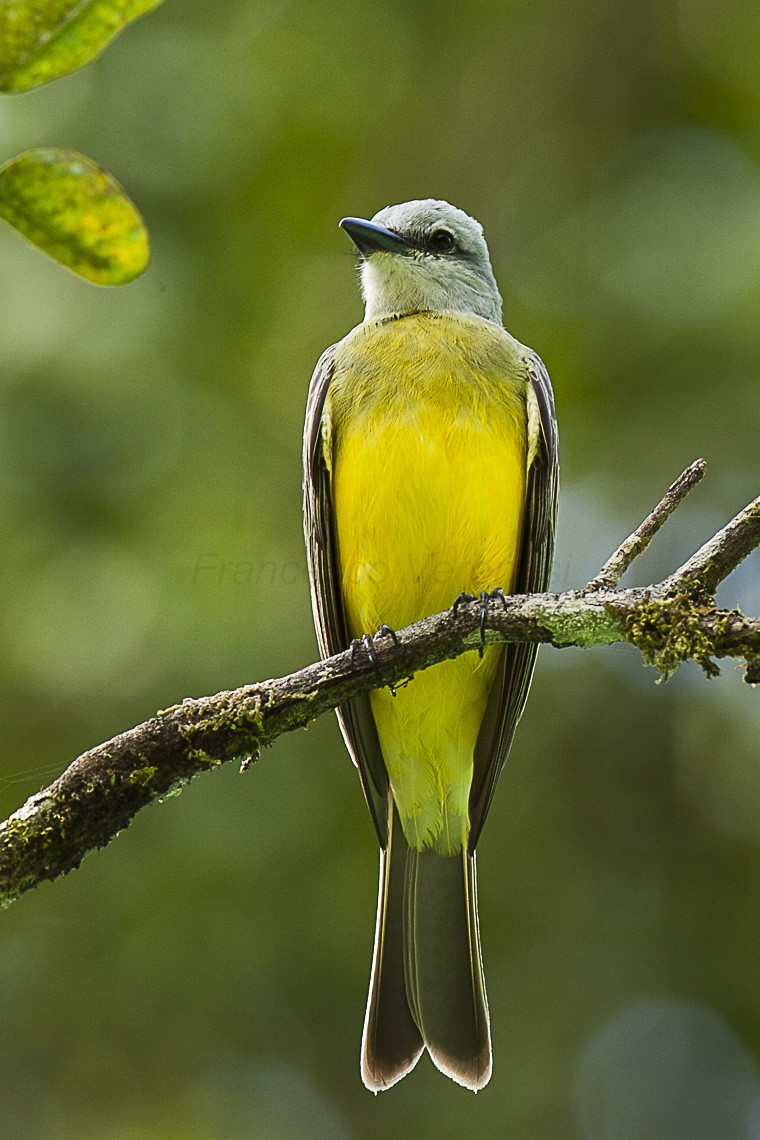Tropical Kingbird
A species of Kingbirds Scientific name : Tyrannus melancholicus Genus : Kingbirds
Tropical Kingbird, A species of Kingbirds
Botanical name: Tyrannus melancholicus
Genus: Kingbirds
Content
Description General Info
 Photo By Francesco Veronesi , used under CC-BY-SA-2.0 /Cropped and compressed from original
Photo By Francesco Veronesi , used under CC-BY-SA-2.0 /Cropped and compressed from original Description
An adult tropical kingbird is 22 cm (8.7 in) long, weighs 39 g (1.4 oz) and has a wingspan range of 38–41 cm. The head is pale gray, with a darker eye mask, an orange crown stripe, and a heavy gray bill. The back is grayish-green, and the wing and forked tail are brown. The throat is pale gray, becoming olive on the breast, with the rest of the underparts being yellow. The sexes are similar, but young birds have pale buff edges on the wing coverts. Tropical Kingbirds appear to be monogamous. In most parts of the species' range, they are permanent residents and remain together in pairs year-round.(Sibley 2014) The call is a high-pitched twittering trill, tree-e-e-e-e-e-e, with a more complex version sung by the male at dawn. Their breeding habitat is semi-open areas with trees and shrubs, including gardens and roadsides. Tropical kingbirds like to observe their surroundings from a prominent open perch, usually high in a tree, undertaking long flights to acrobatically catch insects in mid-air (hawking), sometimes hovering to pick food off vegetation (gleaning). They also eat some fruit from such diverse species as tamanqueiro (Alchornea glandulosa), the Annonaceae, Cymbopetalum mayanum and gumbo-limbo (Bursera simaruba); foraging for these even in disturbed habitat. As they keep mainly to the upper levels of trees, they find little profit in following mixed-species feeding flocks in the understory. These birds aggressively defend their territory against intruders, even much larger birds such as magnificent frigatebirds, toucans, caracaras or hawks. In a study in Parque Nacional de La Macarena of Colombia, parasitism by microfilariae and trypanosomas (presumably T. everetti) was infrequently recorded in tropical kingbirds. The male and female inspect potential sites together before selecting a site, typically a fork or crotch high in a tree (up to 66 feet high) but sometimes just a few feet above water.(Sibley 2014) The female builds a bulky, sloppy-looking, shallow nest of vines, rootlets, twigs, weeds, and grasses; it is unlined or lined with hair. Nests average about 5.2 inches across and 3 inches tall, with interior cup about 3 inches across and 1.6 inches deep. The female incubates the typical clutch of two to four eggs for approximately 16 days, and the nestlings fledge in another 18 or 19 days. The eggs are whitish or pale pink with variable amounts of dark blotching. The tropical kingbird is one of the most widespread and conspicuous inhabitants of open forest, forest edge, scrub and agricultural land from the southwestern United States south to Argentina (Jahn, Stouffer, & Chesser, 2013). As a result, the bird is considered as being of Least Concern and their population is increasing, according to the IUCN. According to Partners in Flight, global estimates of tropical kingbird breeding population is around 200 million. They rate the species as 4 out of 20 on the continental concern scale, indicating that this species is of low conservation concern. 
Size
18-24 cm (7-9.5 in)
Colors
Brown
Black
Yellow
Gray
White
Nest Placement
Tree
Clutch Size
2 - 4 eggs
Feeding Habits
Tropical Kingbird mainly consume large flying insects caught mid-flight from an elevated perch. Prey includes beetles, bugs, and bees. They also consume fruit by perching or hovering, regurgitating larger seeds. Diet occasionally extends to arthropods and small vertebrates.
Habitat
Tropical Kingbird thrive in a variety of open and semi-open terrains, frequently found in areas like coastal scrublands, mangroves, and desert zones with vegetation. These adaptable birds also inhabit agricultural fields, urban green spaces such as parks, and make use of human-made structures for nesting. Their range extends throughout Central and South America, encroaching into North America, often around forest edges and ranging from sea level to higher elevations.
Nest Behavior
Male and female tropical Kingbird select a nesting site together. The female is responsible for building the nest during the breeding season. Their eggs, usually laid in a consistent pattern, receive dedicated parental care until the young tropical Kingbird are ready to fledge.
Nest Characteristics
The nest of tropical Kingbird is typically placed in a high tree fork or crotch, up to 66 feet high, and can also be just a few feet above water. Constructed by the female, it's a bulky, shallow structure made of vines, rootlets, twigs, weeds, and grasses; sometimes lined with hair. The nest averages 5.2 inches in diameter and 3 inches in height, with the inner cup measuring around 3 inches across and 1.6 inches deep.
Dite type
Omnivorous
General Info
Feeding Habits
Bird food type
Sounds
Song
Recording location: Suriname
Call
Recording location: Venezuela
Song
Recording location: Venezuela
Behavior
Tropical Kingbird exhibit monogamous pairings, often staying together year-round in permanent residencies. Their daily activities include maintaining pair bonds through soft calls, wing fluttering, and distinct butterfly-like flights. Interaction with their habitat is evident as tropical Kingbird are territorially aggressive during nesting season, engaging in both threat displays and aerial chases to establish dominion, especially in migratory populations. They fiercely protect their nests against various species but also show a unique tolerance, nesting in proximity to other flycatchers without conflict. Both male and female tropical Kingbird are attentive parents, sharing in the provisioning of food to their chicks.
Species Status
Not globally threatened.
Scientific Classification
Phylum
Chordates Class
Birds Order
Perching birds Family
Tyrant flycatchers Genus
Kingbirds Species
Tropical Kingbird